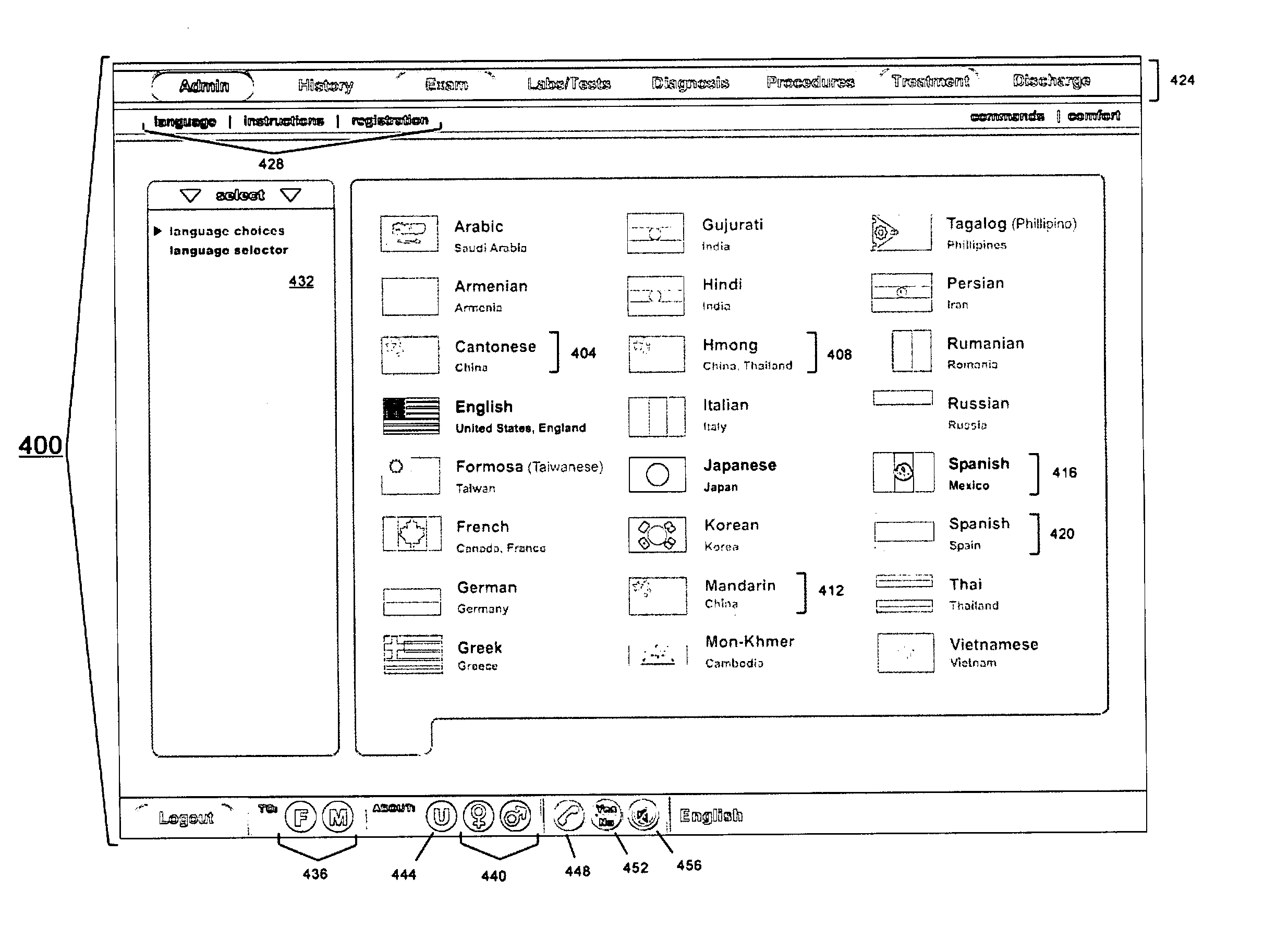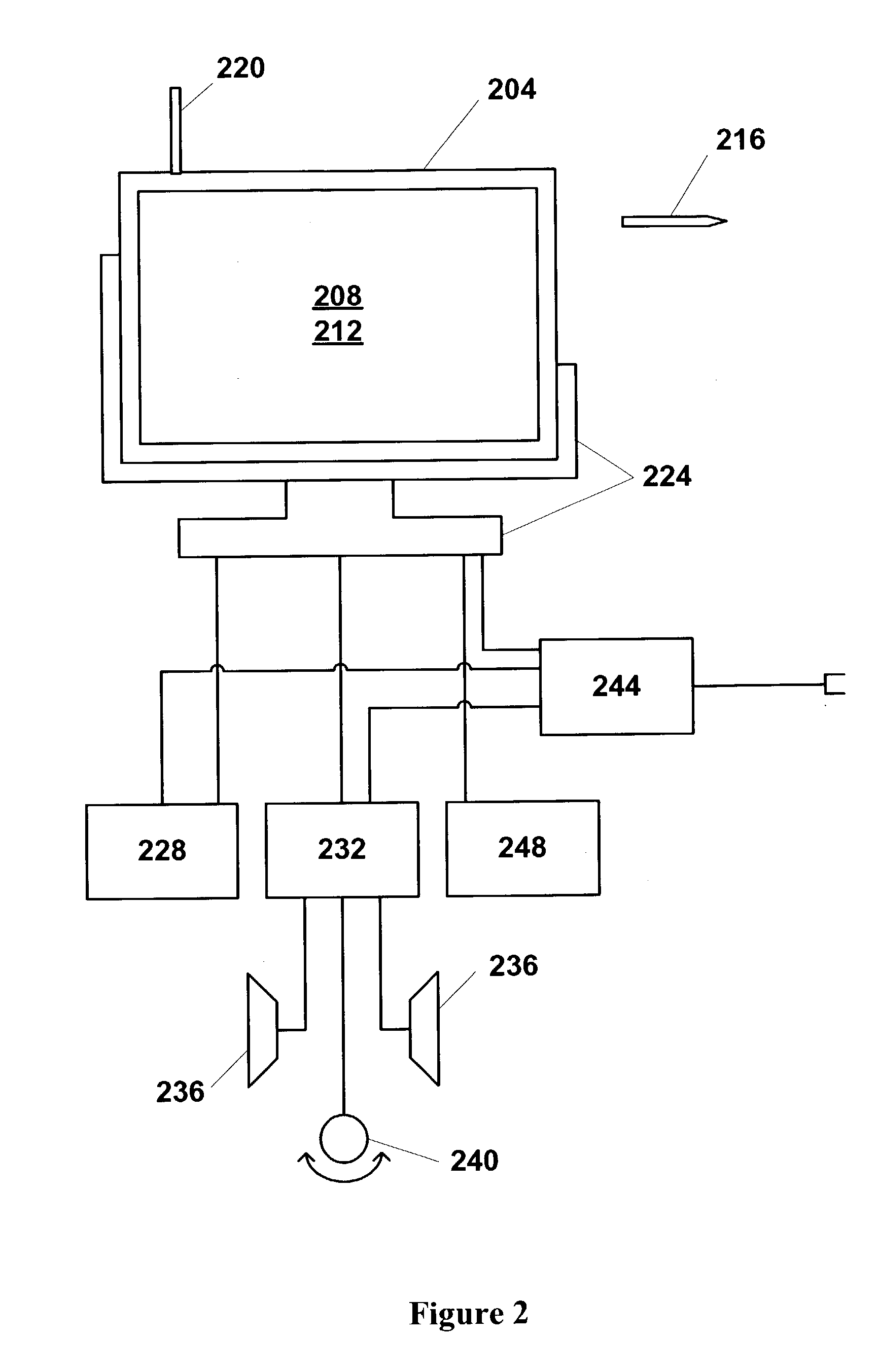Inter-language translation device
a translation device and language technology, applied in speech analysis, instruments, medical science, etc., can solve problems such as lack of proficiency, serious semantic distortion, and potential problems, and achieve the effect of facilitating certain structured exchanges and minimizing the need for interviewers
- Summary
- Abstract
- Description
- Claims
- Application Information
AI Technical Summary
Benefits of technology
Problems solved by technology
Method used
Image
Examples
screens 1200 and 1300
[0114] Screens 1200 and 1300 shown in FIGS. 12 and 13 collect another type of information about relatives. For certain medical issues, it is useful to collect information about relatives of the subject who have experienced a certain symptom or disease. These screens illustrate a question where multiple answers may be selected such as when both the subject's sister and the subject's mother had a certain disease. As before, the interviewer can toggle back and forth between the language of the interviewer and the language of the interviewee.
[0115] Screen 1400 shown in FIG. 14 is a follow-up screen that contains certain follow-up questions that would be appropriate after the interviewee indicates that the subject has experienced a certain medical problem. The interviewer can then obtain more detailed information. Sometimes the follow-up question will have a yes / no answer such as question 1404 "Have you had this problem before?" Note, since most of the questions for other screens are pri...
PUM
 Login to View More
Login to View More Abstract
Description
Claims
Application Information
 Login to View More
Login to View More - R&D
- Intellectual Property
- Life Sciences
- Materials
- Tech Scout
- Unparalleled Data Quality
- Higher Quality Content
- 60% Fewer Hallucinations
Browse by: Latest US Patents, China's latest patents, Technical Efficacy Thesaurus, Application Domain, Technology Topic, Popular Technical Reports.
© 2025 PatSnap. All rights reserved.Legal|Privacy policy|Modern Slavery Act Transparency Statement|Sitemap|About US| Contact US: help@patsnap.com



